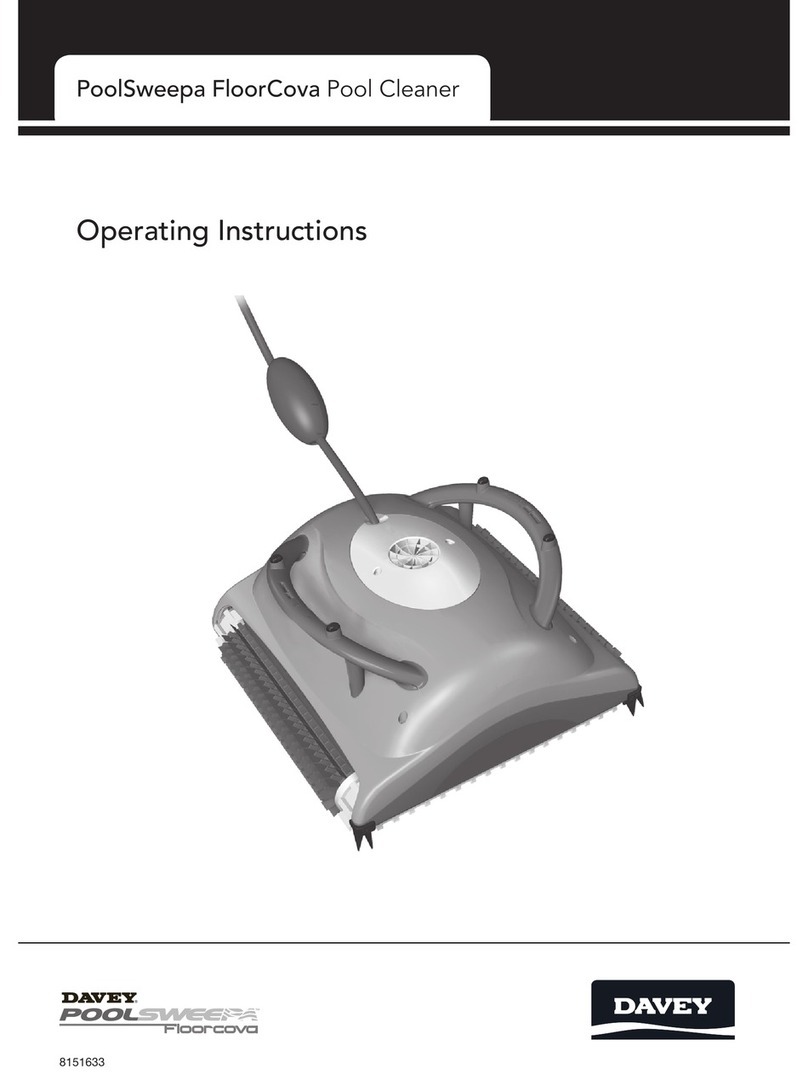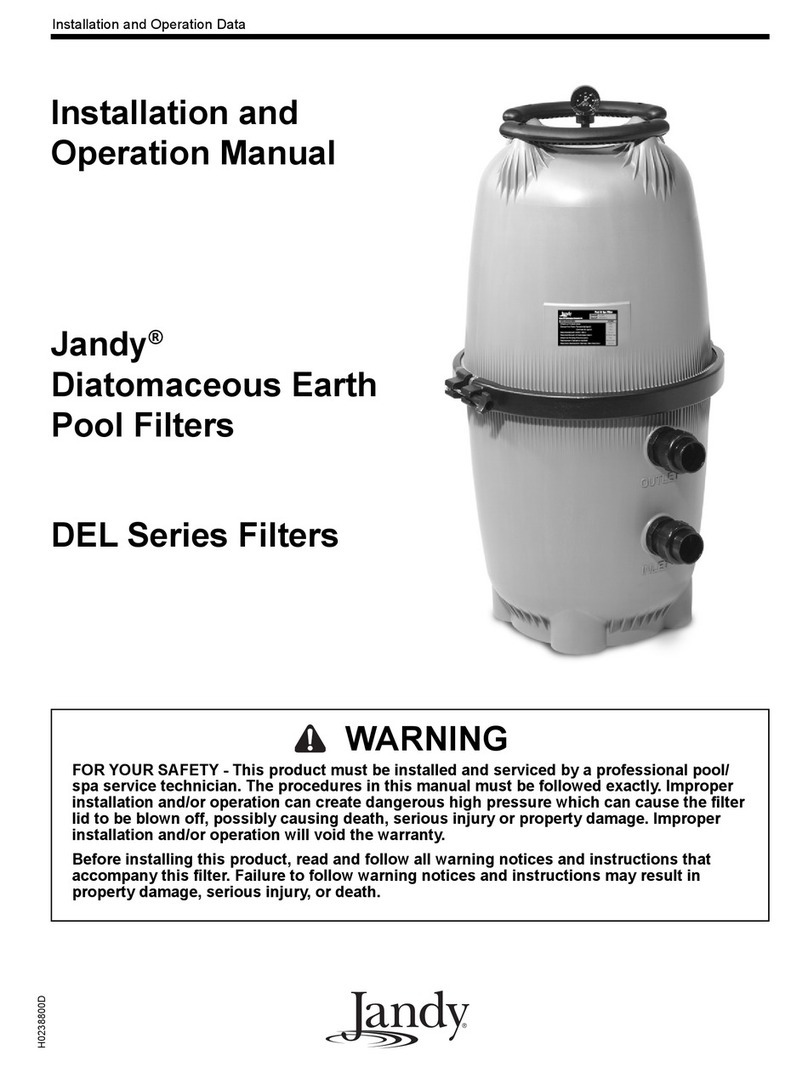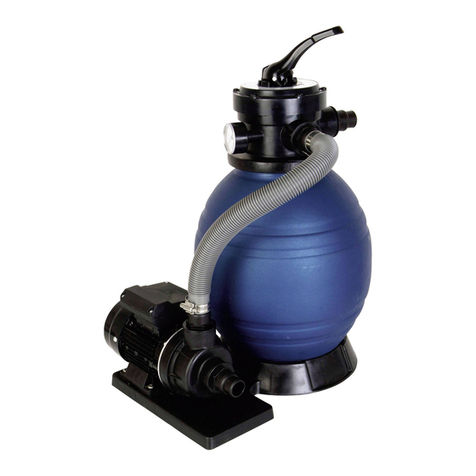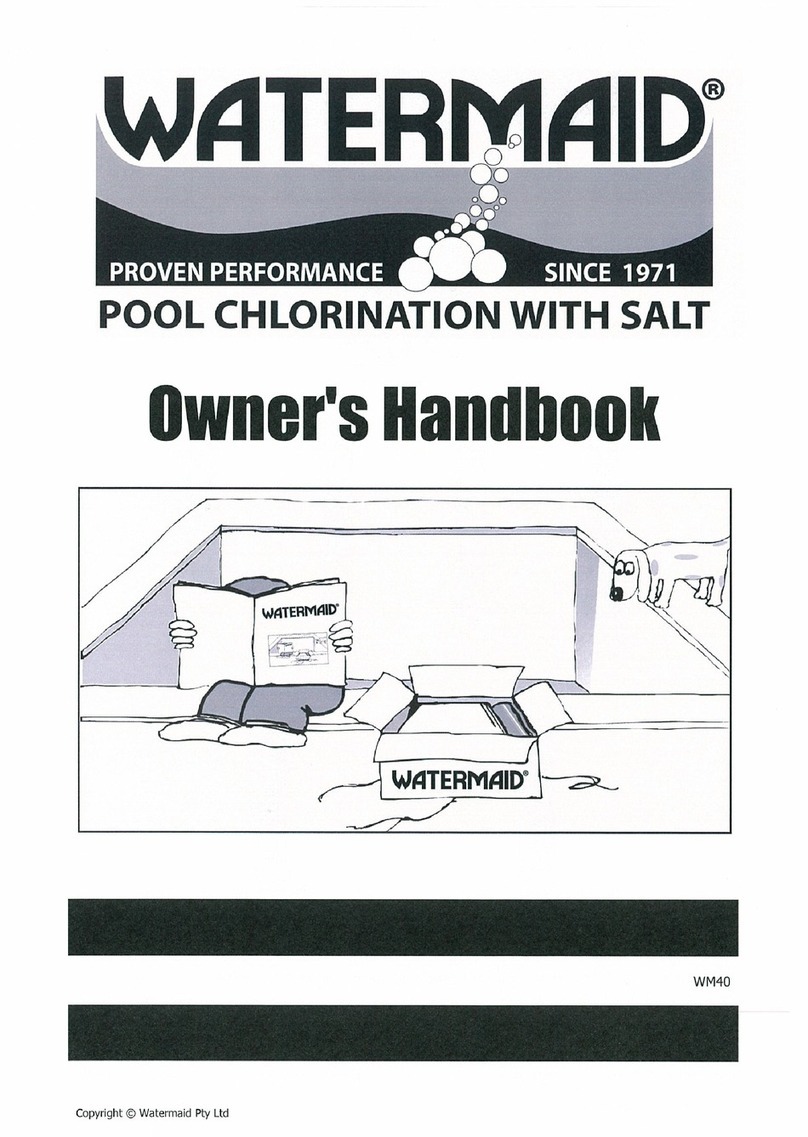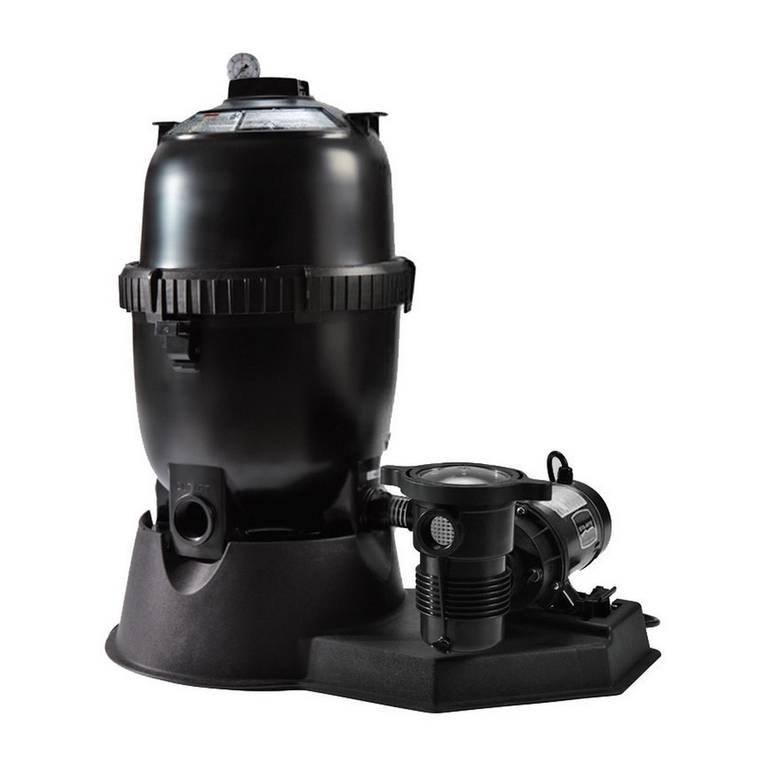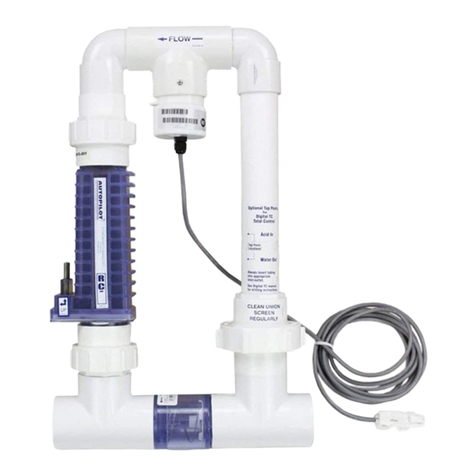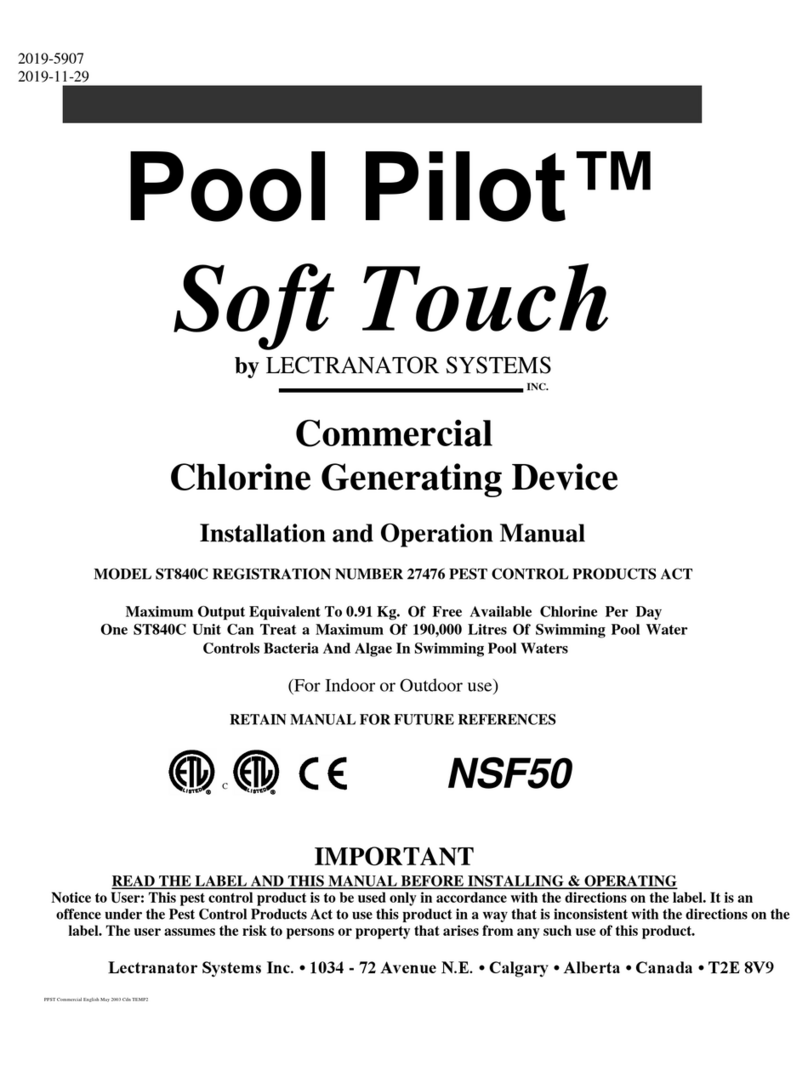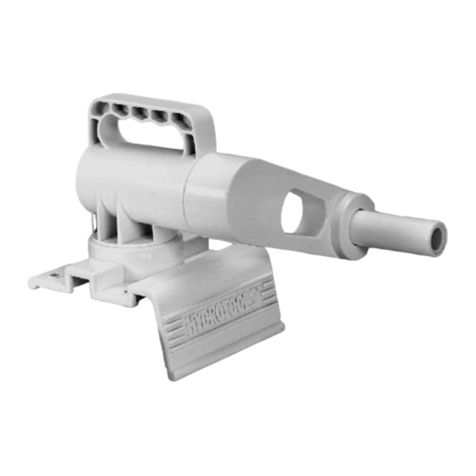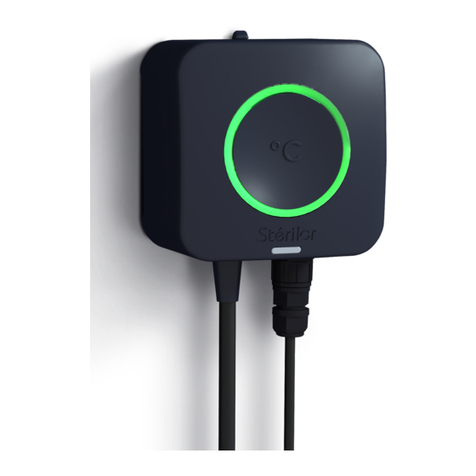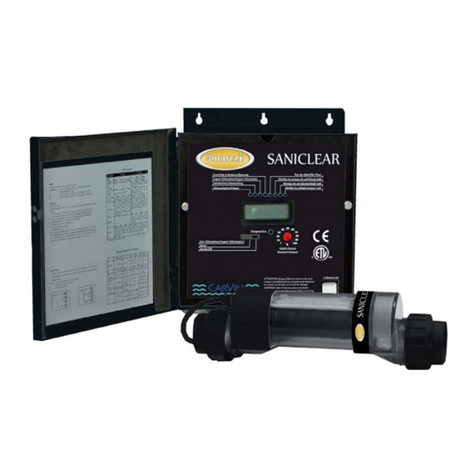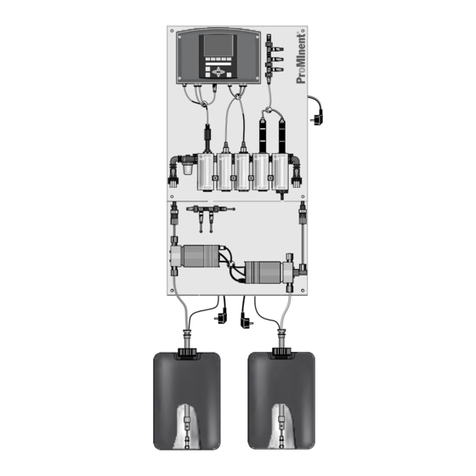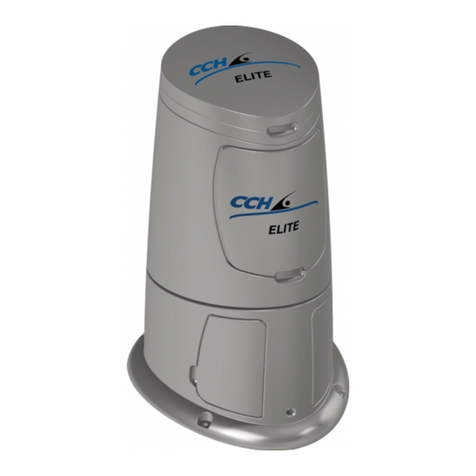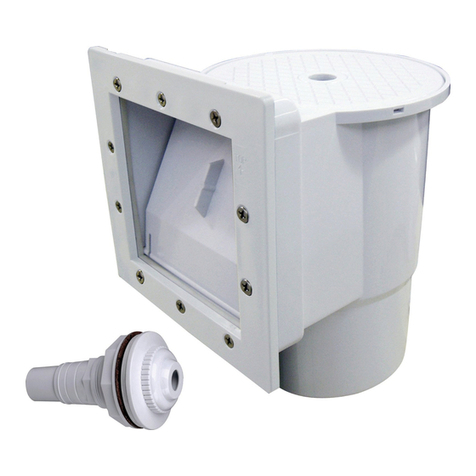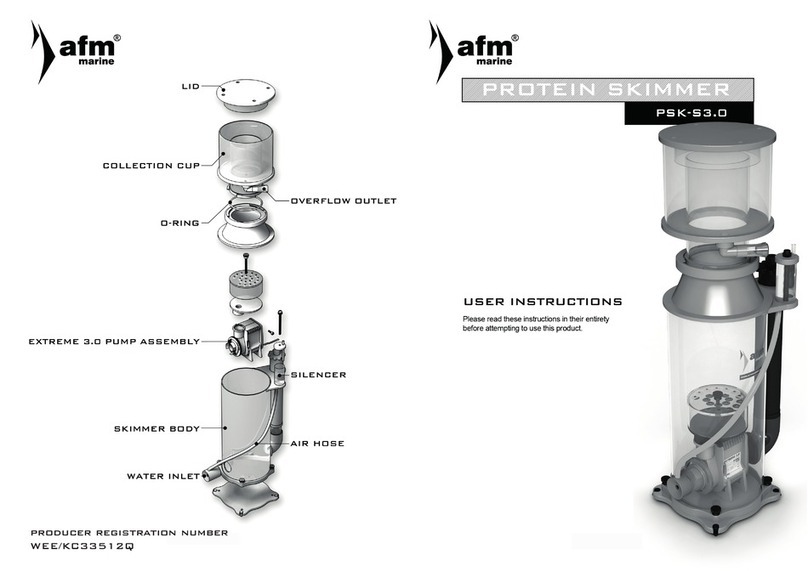
STEP 1 - Proper Water Balance Requirements
Proper Lectranator System operation is dependent on proper pool water conditions. Manually balance the pool water chemistry to meet all recommended ranges of
water balance factors below before start-up of Lectranator. From that point forward your Lectranator System will assist you in keeping your water chemistry factors in
balance. Check expiry date of the test kit as the result may be inaccurate if used after that date
Maximum spa water usage temperature is 40 C. Duration in spa water at 40 C should not exceed 15 minutes. For proper sanitation, spa must be completely drained
periodically. The number of days between COMPLETE SPA DRAINAGE is equal to the volume of spa water in litres, divided by 10 times the maximum number of
daily spa users. Refill spa with water and repeat the start-up procedure.
BEFORE START UP MAKE SURE THE POOL WATER MEETS THE FOLLOWING REQUIREMENTS:
ALL WATER BALANCE FACTORS SHOULD BALANCE WITH LANGELIERS SATURATION INDEX. WE RECOMMEND THE TAYLOR K-2005 TEST KIT, OR A
VISIT TOYOUR LOCAL POOL PROFESSIONAL. CHECK EXPIRY DATE OF THE TEST KIT AS THE RESULT MAY BE INACCURATE IF USED AFTER THAT DATE.
Lectranator System Required Ranges (And periods for testing water for these water balance factors.)
CAUTION: Excessive Free Chlorine (> 3.0 ppm) or Free Available Bromine (>5.0ppm) causes corrosion of any metal components in contact with pool/spa water.
Staining and premature failure of heaters, filters, and other metal components will be the result. Do not exceed recommended sanitizer ranges. NOTE: Standard
(DPD reagent) pool water test kits do not read chlorine/Bromine levels above approximately 8.0 ppm residual. Test reagents, at high levels, return to a
clear liquid. AVOID HIGH SANITIZER LEVELS!
STEP 4 - Salt Requirements
It is important that a suggested salt level of 3000 ppm be maintained at all times. Allowing less than 2800 ppm salt may activate a service light. The amount of salt
required depends on the size of the pool. Use of “Tabex” granulated, evaporated, non-iodized blended salt is recommended. Water conditioning pellets can be used
but take longer to dissolve. Use the chart on the next page to determine the amount of salt to add, in pounds or kilos, for a new pool start up. Also test your make up
water for its level of salt and compare it with the charts on the next page. Before adding salt to a pool for the first time, turn your Lectranator off, open your main
drain, then pour salt around the perimeter of the pool.
NEVER add salt directly through the skimmer. Turn device off before adding sodium chloride, sodium bromide and other chemicals, and wait until com-
plete dissolution before turning it on. Use only Sodium Bromide that is registered or scheduled under the Pest Control Products Act..
NOTE: DO NOT allow large amounts of undissolved salt to remain on fresh cementitous pool/spa interior surfaces. Brush vigorously to accelerate salt
dissolving especially in cold water conditions, or in pools with inoperative or no main drains.
Stains From Salt
CAUTION! Generic (bulk) salts have anti-caking additive in them that contains a small amount of Iron. When large quantities of this type of salt are left on the pool
floor to slowly dissolve, this iron content will leave a brown or orange colored stain. We suggest brushing the salt periodically to assist in the dissolving of the salt.
NOTE: Homeowners with water softening equipment, which utilize salt, may already have substantial levels of salt in their drinking water. So before
adding water to your pool, test the level of salt, then determine the amount of salt still
needed to be added to bring the level up to the suggested 3000 ppm level.
Manual Cell Cleaning (Residential Single Cell System
The electrolytic cell has a life expectancy of 2-5 years of use under typical condition of use. When replacing the cell, only use replacement cells having a
label that clearly states that it is:
A) a replacement cell for the chlorine generating device Lectranator Salt Chlorine Generator Model 360, REGISTRATION NUMBER: 23160, PEST
CONTROL PRODUCT ACT, or
B) a replacement cell for the chlorine generating device Lectranator Salt Chlorine Generator Model 840, REGISTRATION NUMBER: 20151, PEST
CONTROL PRODUCT ACT
In normal conditions the Lectranator cell should not require Manual Cleaning. If manual cleaning is required, check water chemistry for possible imbal-
ances or call factory for consultation and use the following procedure.
STEP 1 - Remove the cell by loosening the unions to release.
STEP 2 - Fill a bucket with 1 part muriatic acid or Tabex Grime Away to 4 parts of water. PUT WATER IN BUCKET FIRST!
CAUTION: Always add acid to water never water to acid.
STEP 3 - Submerge the cell and not the flow switch.
STEP 4 - After 10-15 minutes of foaming, remove the cell. Rinse out with fresh water.
STEP 5 - If cell blades still have white crusty scale deposits on them, repeat process, not to exceed 15 minute intervals.
NOTE: DO NOT try to remove any scale from cell blades with any tools. This may scratch or damage the coating on the blades and will void
warranty.
Pool Water Preparation & Monitoring
Section 1 b
STEP 2 - Daily Checks
1) Free available Chlorine 1.0-3.0 ppm (pool)
Free Available Bromine 1.0-3.0 ppm (pool)
Free Available Chlorine 3.0-5.0 ppm (spa)
Free Available Bromine 3.0-5.0 ppm (spa)
2) pH 7.2-7.8 ppm
STEP 3 - Monthly Checks
3) Calcium Hardness 200-300 ppm (pool)
Calcium Hardness 150-200 ppm (spa)
4) Total Alkalinity 100-120 ppm
5) Cyanuric Acid 30-100 ppm
6) Salt Residual 2800-3200 ppm
7) Langeliers Index (water balance) + or - 0.3

